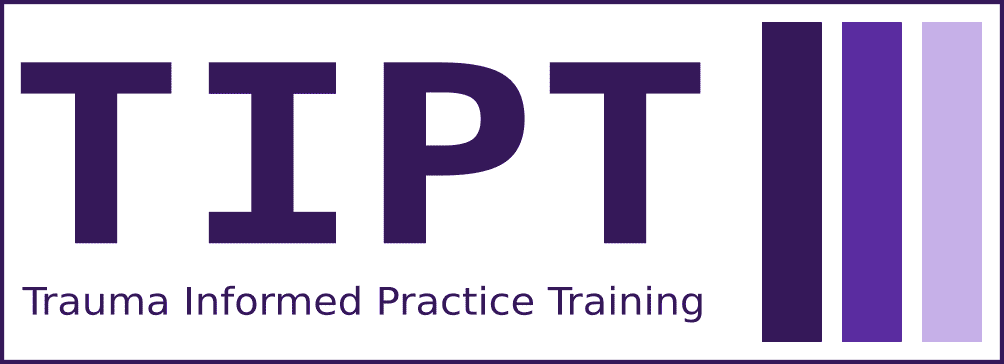Youth At Risk

By Tanya Hallet

Warning: The following blog mentions sexual assault, suicide, drug and alcohol misuse and domestic violence. It may be upsetting for some readers.
My classroom door flies open and hits the wall. I look up and stop chewing the salad in my mouth.
“If I see that f******* b**** again, I’m going to smash her f******* face in!”
The energy of the room thickens and intensifies, and I put the lid back on my lunch. Sarah* is enraged. Her eyes are wide, pupils are dilated, and I swear I can see white sparks in blues of her eyes. She paces around the room, rapidly changing direction, clenches her hands into fists. She throws her bag onto the table; it slides across and crashes to the floor. Her breath is shallow.
I slowly stand up from behind my computer at my desk and slowly walk towards her, keeping space between her and I so she doesn’t feel threatened or trapped. Sarah is a classic example of a young person who has lived through complex trauma. She is an “at risk youth”.
“What’s happened, love?” I asked, quietly and gently.
“That f******* b**** has been going around the whole school stirring up sh** and causing fights between me and everyone!”
“Ok..”
“Yeah so I’ve come in here so I don’t smash her and get suspended again.” She stormed into the room ready to fight and now she glances at the door deciding if she wants to flee.
“Hmmm…good choice…” I reply while making my way towards another chair on the side of the room and sitting down. “Would you like to come and sit down here and talk to me? You don’t have to if you don’t want to.” I have to make sure she doesn’t feel more scared or trapped.
Sarah stops pacing for a moment and considers this. She swipes her nose with the back of her hand and sits down opposite me on a chair. Her hands are shaking. Sitting down helps to deescalate her a little bit because you can’t be tense with your whole body and sit down at the same time. Try it. You will see it doesn’t work.
“Do you want to squeeze my hand?” I ask quietly.
She stares at it for a moment and grasps it. We hold hands firmly. Her breathing starts to slow a little. This firm touch helps stimulate the Vagas Nerve System. Stimulating the Vagas Nerve System is the antidote to our stress fight and flight response. Sarah’s trauma response is firing off and I need to show her it doesn’t need to.
“Would you like some water?” Cold water, another way to stimulate the Vagas nerve and encourage calm. “Take a deep breath and have a sip.”
She begins to relax a little. Soon, we may be able to talk about what has happened, but not until I can get her amygdala to stop sending alarm bells through her body. I need to show her there is nothing to fear and that she is safe. Her Complex Post Traumatic Stress Disorder means that she is always so close to capacity, always hypervigilant, scared of the next thing that might happen and preparing herself for the next fight she may have to have. The world is dangerous for her, people can’t be trusted and nowhere is safe. She is coming down from crisis point, deescalating slowly, but we are far from her baseline. I won’t attempt to speak or say anything yet. There isn’t much point. She won’t hear me anyway.
The door opens, and another staff member comes in.
“We need to talk about this situation,” she begins. “Rachel* is very upset..”
“Of course! You’re going to take her side, aren’t you? She shoots her mouth off and everyone listens to her!” She cries out on the verge of tears.
Sarah jumps to her feet. She is tense again, angry, on guard. Everything I have spent the last ten minutes trying to undo.
“Well, we have to talk about this..” begins the other staff member.
“There’s nothing to talk about!” Sarah shouts back.
“Perhaps its best if you go home. We have to call you carer…” The staff member answers her calmly and quietly.
“She’s working…she can’t just answer the phone.”
“Ok..well I’ll try her anyway…..No there is no answer.”
“I just f****** said that! She’s working! She can’t just answer the phone whenever!” Sarah’s shouts.
“Okay…” I say quietly rising to my feet between them.” Sarah, how about we go for a little walk around and see if that helps. Is that alright? Then maybe we can try your carer again later. “ I say, looking over to the other staff member.
Sarah is too angry to hear anything anyone says right now. She is back in crisis. Her prefrontal cortex (the thinking part of our brain) isn’t behind the wheel. And when we are in crisis, our ability to communicate effectively is compromised. When I try to communicate with her, Sarah will hear less than 7% of what I say. She will pay more attention to my tone of voice (38%) and my body language (55%).
Sarah and I walk around and around the school. We walk across the oval and up and down the classroom blocks. The rhythm of our steps starts to bring her anxiety down and calm the anger. Then she starts talking. I hear about her homelessness, her experiences as a child being repeatedly sexually assaulted. I hear about her father’s alcohol addition, her mother’s drug use. I hear about the violence and abuse she has seen and endured.
“I’m sorry that has happened to you. You are such a lovely girl, and you didn’t deserve any of that.” This is all I can offer her. I feel sad and angry at everyone who has failed her.
Sarah is smart and compassionate and fiercely loyal. There is nothing she wouldn’t do for the people she cares about. I want her to have a chance to reach the potential she has. So much is stacked against her and it is infuriating and soul destroying.
And sadly, Sarah isn’t as unique as you might like to think. There are so many young people who live in Australia and suffer from complex trauma. The latest statistics from ABS suggest that 62-68% of young people have experienced at least one trauma by the time they are 17. According to the Australian Institute of Health and Welfare, one in six girls have been sexually abused by the age of 15. And one in nine boys have been sexually assaulted by the same age. With the conflicts of the last few years and the cost-of-living troubles, these statistics will only climb higher.
These young people are expected to go to school, study, live their lives, behave, and try hold down a part time job while many of them struggle with the wounds that complex trauma and abuse cuts them with.
Due to the complex trauma they have suffered, they struggle intensely with emotional regulation. They can become enraged fast. They may disassociate. They struggle to form secure, healthy relationships. They more likely to shorten their lives through risk taking behaviours and are more likely to develop cardiovascular health problems.
The sad truth is, that if more is not done to help our most vulnerable youth, they will be more likely to suffer from severe mental health illnesses, substance misuse, sexual assault, domestic violence, involvement with the justice system, and far more likely to attempt suicide.
What these kids need is wrap around support. They need trauma informed teachers, they need trauma informed case managers, trauma informed counsellors. They need first rate psychological support and healthcare. Some of them need a safe place to live. When they go into the workplace, the need trauma informed leaders and mentors.
They need a chance. They need so much more than our society has provided them with so far.
We need to invest in these kids. We need to invest now before its too late.

Other Blogs







